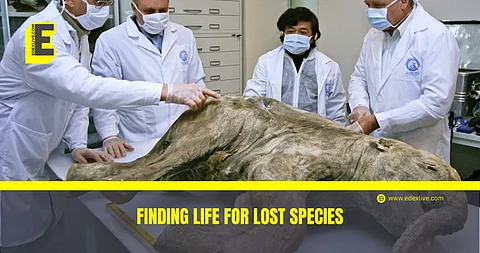Finding life for lost species
The idea of reviving extinct creatures has transitioned from science fiction to an emerging scientific reality. With remarkable advances in biotechnology and genetic engineering, scientists are now exploring the possibility of bringing back species that once roamed the Earth.
While recreating dinosaurs, as seen in Jurassic Park, is far-fetched, given that DNA degrades beyond usefulness over millions of years, more recent extinctions present tangible opportunities.
The science of “de-extinction” or resurrection biology involves reviving extinct species using methods such as cloning, genome editing, and back-breeding. These approaches aim to recreate animals that resemble their ancient ancestors, though exact copies remain impossible.
For instance, back-breeding selectively revives ancestral traits using living relatives, while cloning transfers the nucleus of a preserved cell into a donor egg. Genome editing allows precise gene insertion into the DNA of related species, producing hybrids.
One of the most ambitious efforts is by the company, Colossal Biosciences, which is working to resurrect the woolly mammoth by splicing its genes into Asian elephants. Dubbed “mammophants,” these hybrids are expected to be released into Siberia’s Pleistocene Park by 2028.
Colossal’s vision extends beyond biology. Scientists believe they could help combat climate change by disturbing permafrost, suppressing tree growth, and encouraging carbon-trapping grasslands, restoring lost ecological balance.
This idea is being tested at Pleistocene Park in Siberia, a man-made attempt to recreate the Ice Age ecosystem once dominated by mammoths.
Cloning has been used successfully in the past, for example, when Dolly the sheep was created in 1996. Other de-extinction projects include reviving the dodo, a flightless bird native to Mauritius that became extinct in the 1600s, and the Tasmanian tiger, also known as the thylacine, which was wiped out by European settlers by the 1930s.
Critics argue that even if science succeeds in creating living proxies of extinct animals, they will never be identical to the originals. Moreover, ecosystems have evolved since these species disappeared. Introducing top predators like the Tasmanian tiger could disrupt current food chains, and mammoths may struggle to survive in landscapes that have undergone major ecological changes.
Ethical concerns also persist. Scientists disagree with playing God; they argue that de-extinction happened for a reason, and only the fittest survived. Science should focus on conserving species that are threatened today and help them sustain themselves instead of resurrecting the extinct ones.



